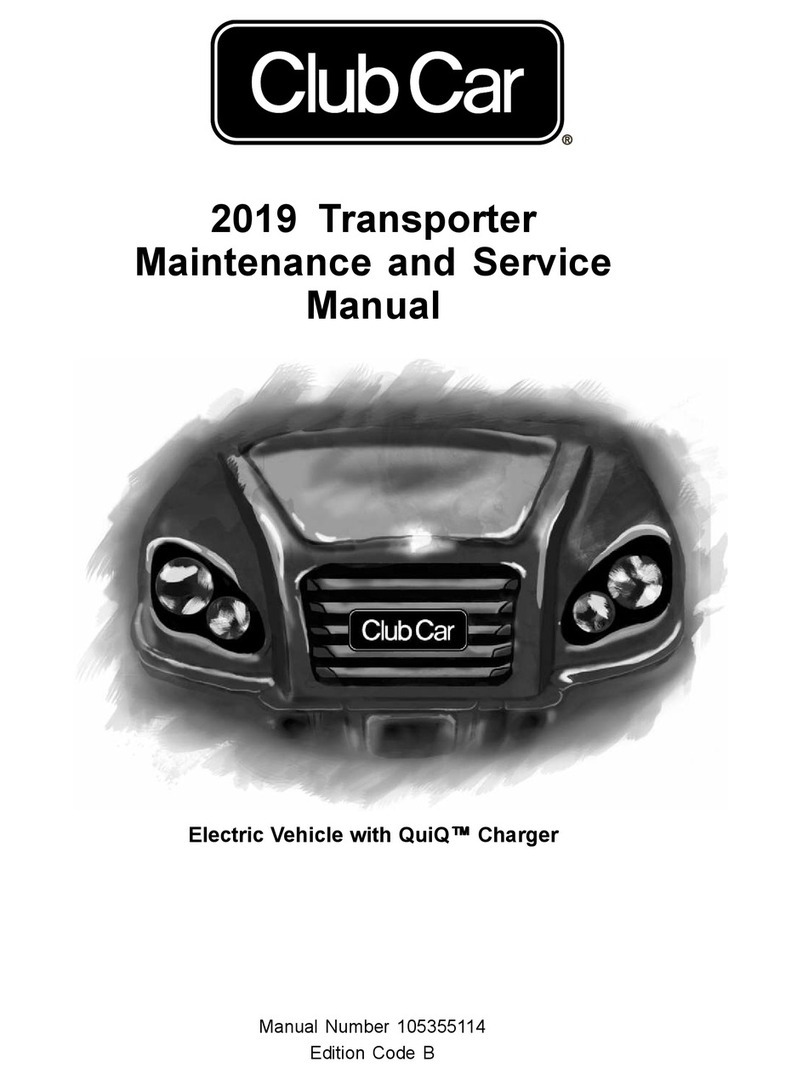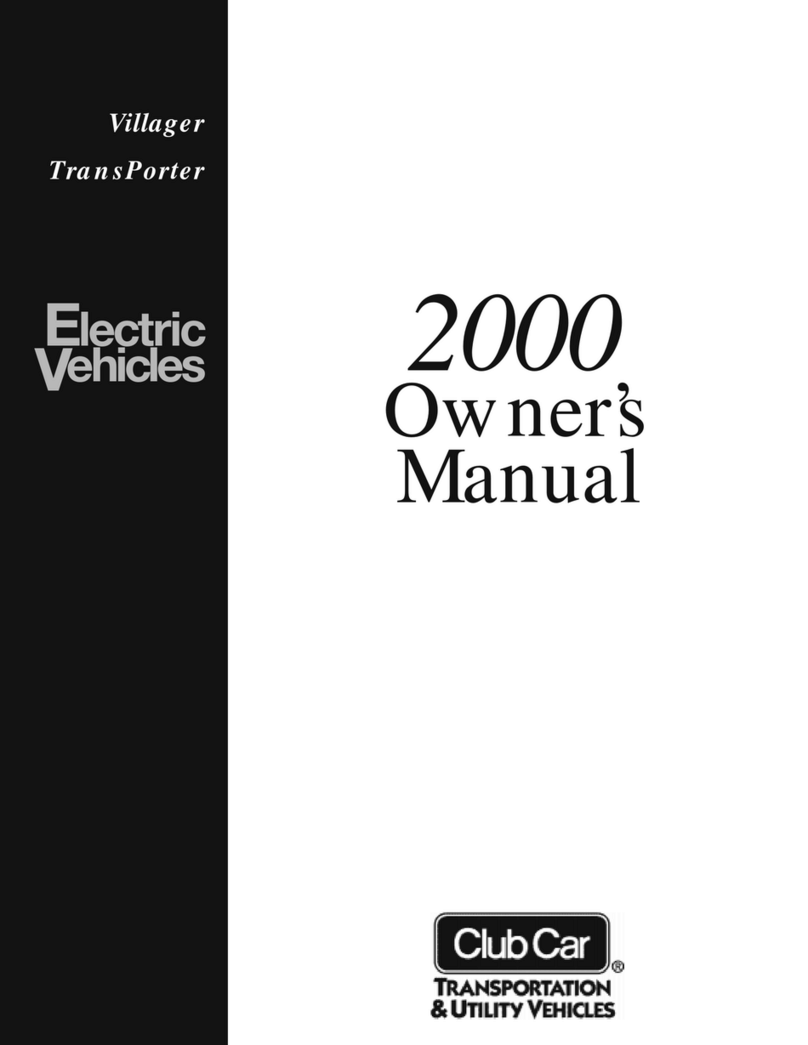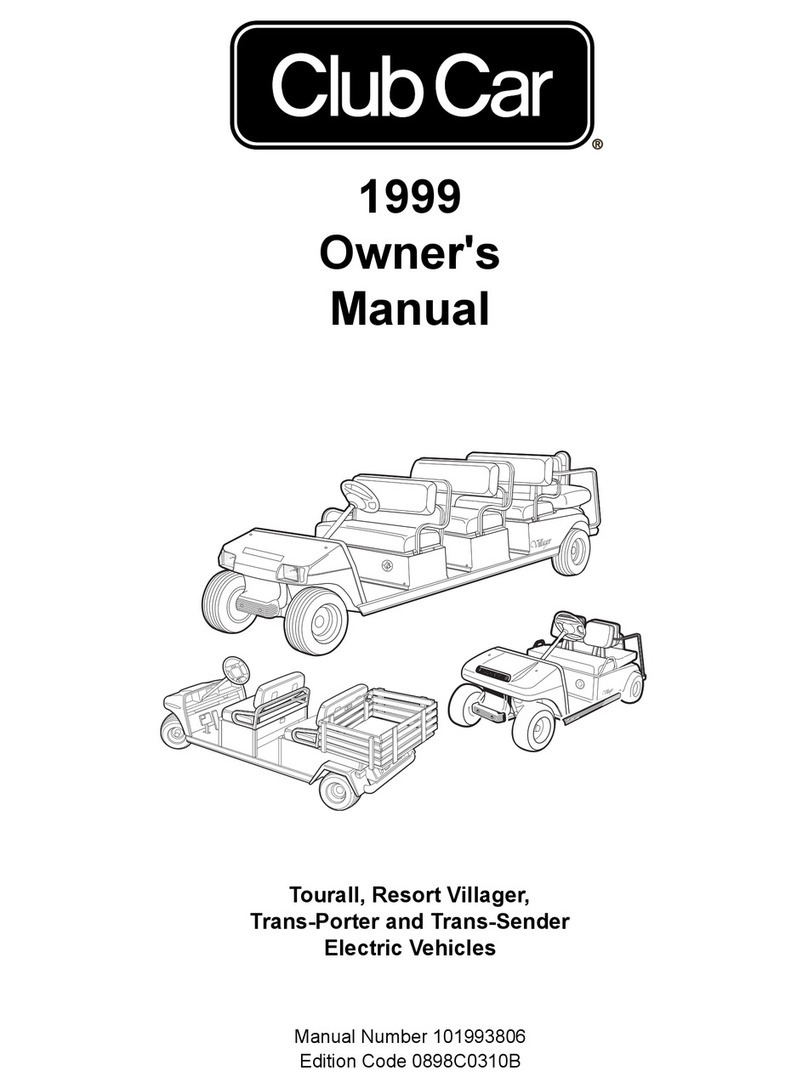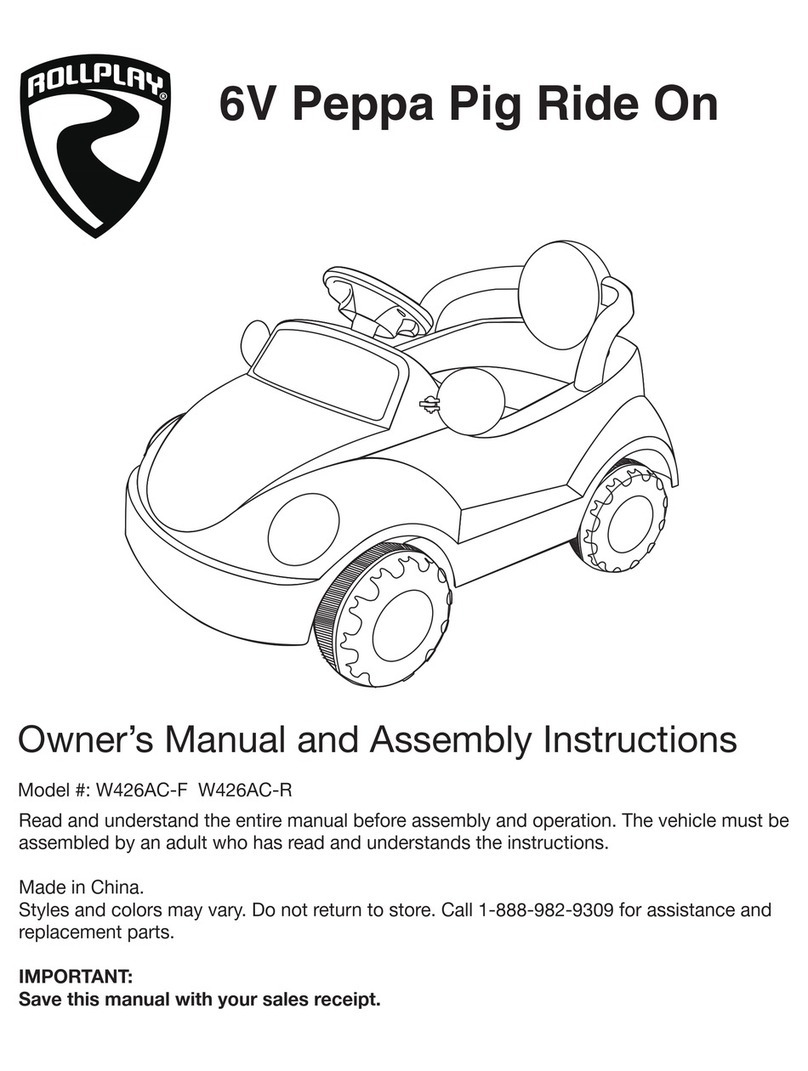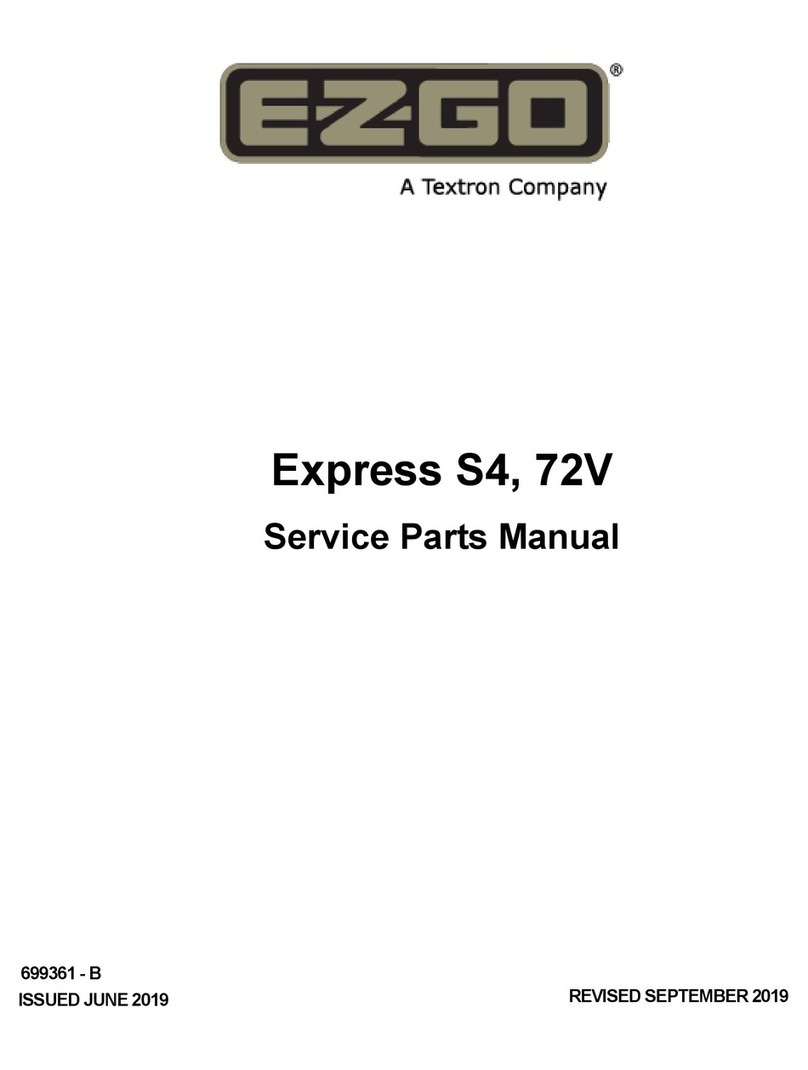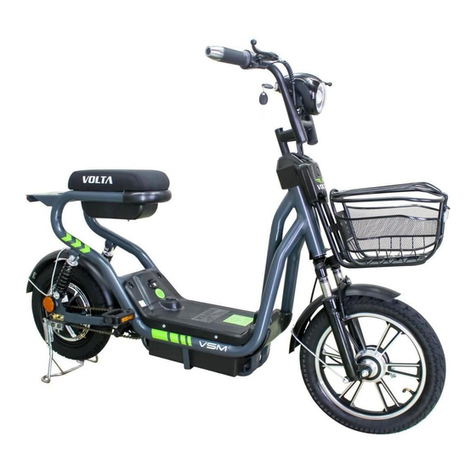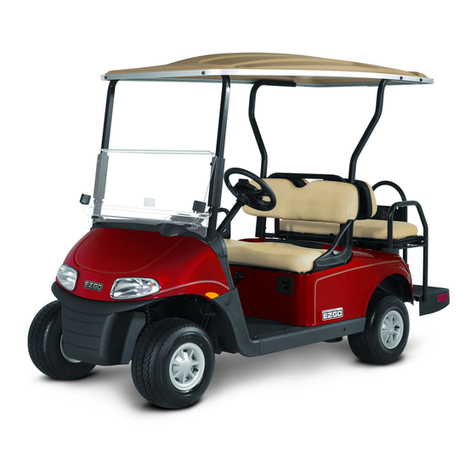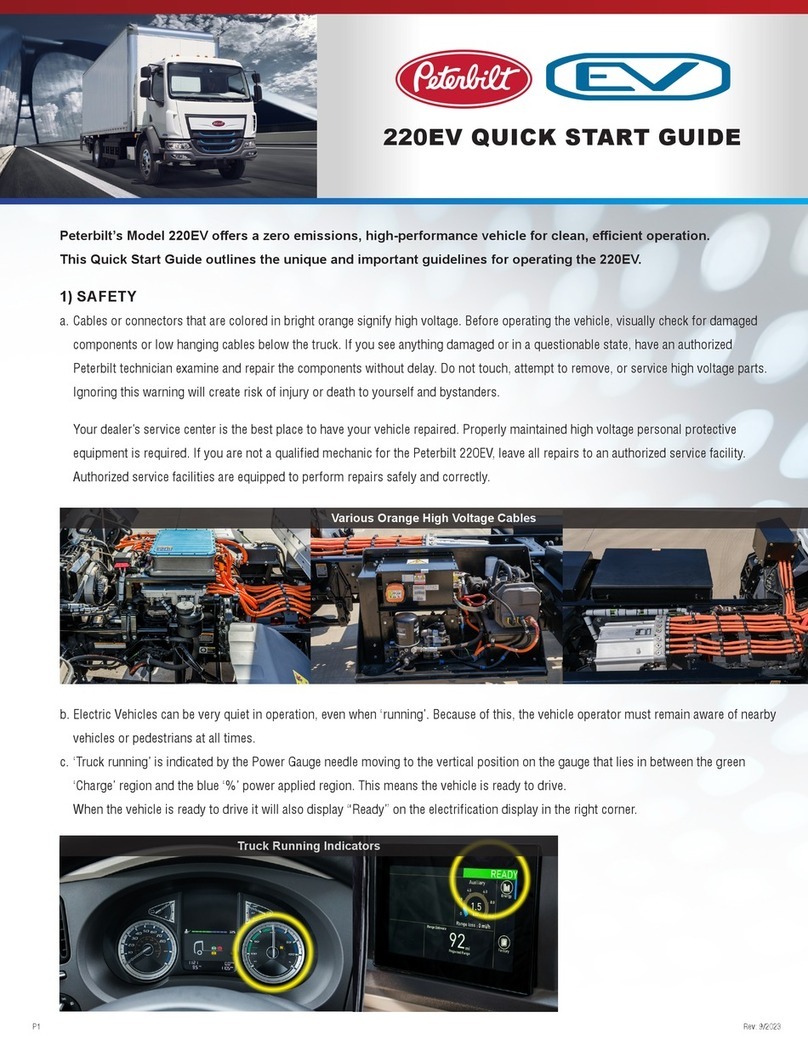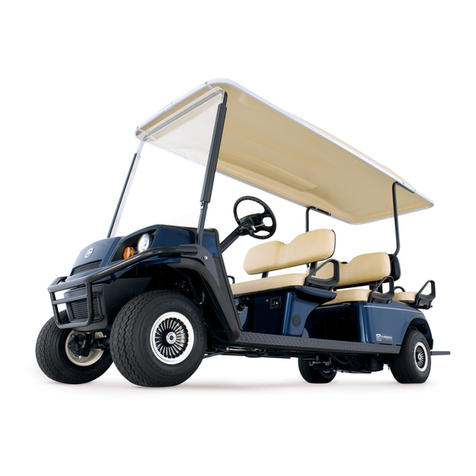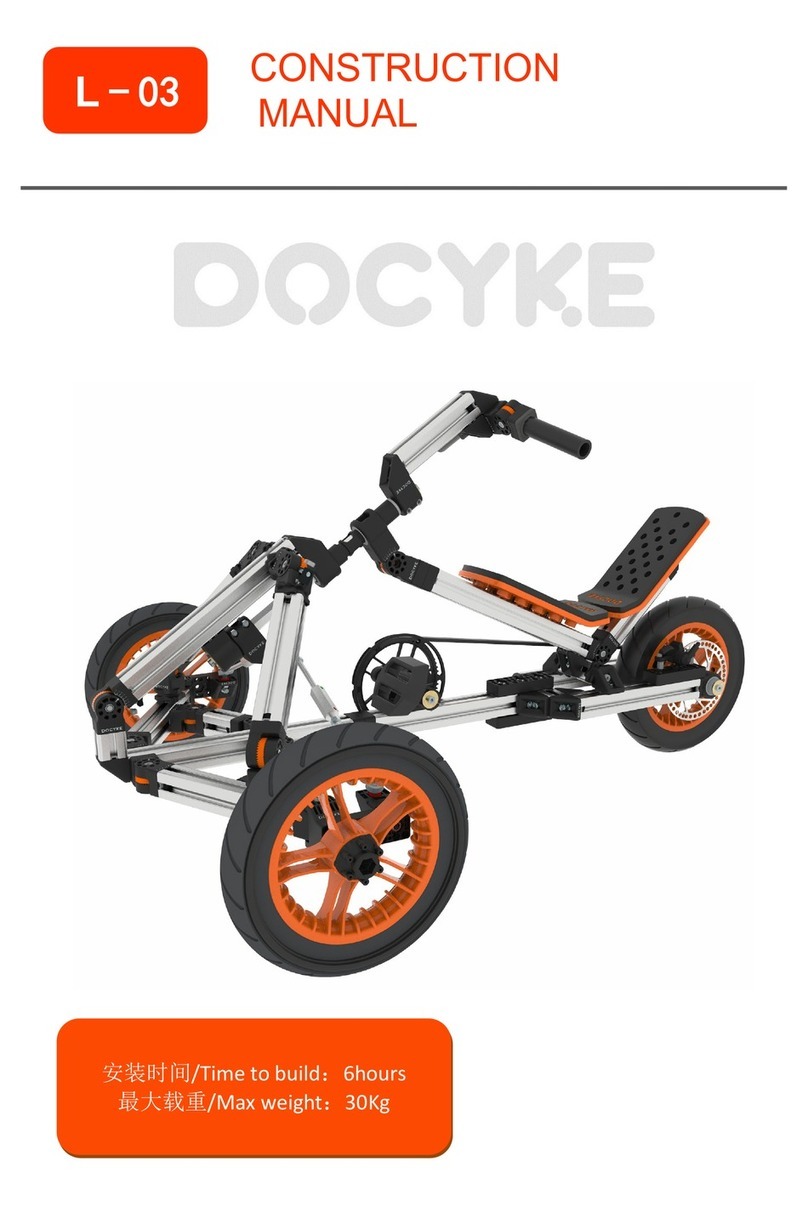
Vehicle Feature Identification
4 2000 Carryall Electric Vehicle Manual
CARRYALL I AND CARRYALL II
OPERATING INSTRUCTIONS
SERIAL
NUMBER
BRAKE
PEDAL
PARK BRAKE
PEDAL
ACCELERATOR
PEDAL
DRIVER/PASSENGER
WARNING DECAL
VEHICLE LOADING DECAL
(FOR CARRYALL I ONLY)
BED/LATCH
WARNING DECAL
BED LOAD
WARNING DECAL
(FOR CARRYALL II ONLY)
•
Operation from driver side by authorized persons only
and only in designated areas - not on public roads.
•
DO NOT start vehicle until all occupants (two (2) per seat
maximum) are seated.
•
Remain seated with entire body inside vehicle and hold
on to seat handle or handrail at all times.
•
Drive slowly in turns and straight up and down slopes.
•
Never stand in front of or behind vehicle.
•
DO NOT operate while under the influence of alcohol or
drugs.
•
DO NOT leave children unattended on vehicle at any time.
WARNING
READ AND FOLLOW THESE WARNINGS AND THE OPERATING
INSTRUCTIONS BEFORE USING VEHICLE. FAILURE TO DO SO CAN
CAUSE SEVERE INJURY OR DEATH.
CCI 1019606-01
!
OPERATING INSTRUCTIONS
•
Read Owner's Manual and safety warnings located on dash panel prior to driving.
•
Study and understand controls.
•
Make sure wheels are turned in desired direction.
•
Turn key to “ON” position and be sure nothing is in your path.
•
While vehicle is stopped, select direction by placing
shift lever or switch in desired position:
F – Forward N – Neutral R – Reverse (Buzzer will sound)
•
Vehicle will start moving when accelerator pedal is depressed.
•
Slowly depress accelerator pedal to increase speed. Park brake will
release when accelerator pedal is depressed.
•
To stop, release accelerator pedal and depress brake pedal.
•
After stopping, firmly depress park brake until it locks.
•
Place forward and reverse switch in neutral position.
Turn key “OFF” and remove key when not in use.
CCI 1016216-01
•Vehicle rated capacity - 800 lbs. on level surface only.
Weight to include passengers, cargo bed load, and
gross trailer weight. See Owner's Manual.
•Maximum cargo load - 300 lbs. Weight to include cargo
bed load and gross trailer weight.
•Maximum trailer hitch tongue weight - 150 lbs.
•Cargo should be evenly spread over the floor of the
cargo bed as far forward as possible and secured.
•For vehicle stability, when fully loaded, drive slowly
and avoid stopping on or backing down steep hills.
•Avoid top heavy loads. See Owner's Manual.
•When driving on uneven terrain or down steep hills,
reduce speed and load.
VEHICLE
LOADING
ReadOwner's Manual
andwarnings ondash. CCI 1019601-01
•Vehicle rated capacity - 1200 lbs. on level surface only.
Weight to include passengers, cargo bed load, and
gross trailer weight. See Owner's Manual.
•Maximum cargo load - 800 lbs. Weight to include cargo
bed load and gross trailer weight.
•Maximum trailer hitch tongue weight - 150 lbs.
•Cargo should be evenly spread over the floor of the
cargo bed as far forward as possible and secured.
•For vehicle stability, when fully loaded, drive slowly
and avoid stopping on or backing down steep hills.
•Avoid top heavy loads. See Owner's Manual.
•When driving on uneven terrain or down steep hills,
reduce speed and load.
VEHICLE
LOADING
ReadOwner's Manual
andwarnings ondash. CCI 1019602-01
BATTERY WARNING
LIGHT
KEY SWITCH
CRUSH AREA
DECAL
WARNING
STAY CLEAR
CRUSH AREA
CCI 1016094-01
OFF ON
